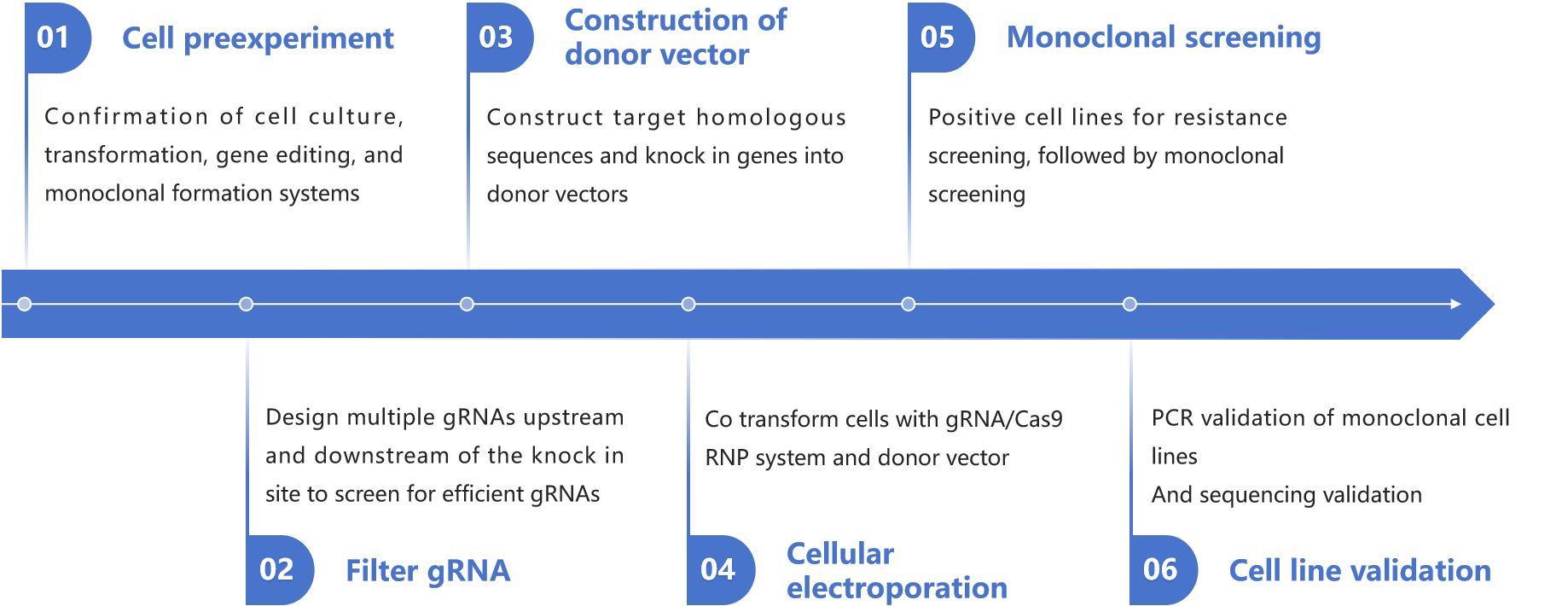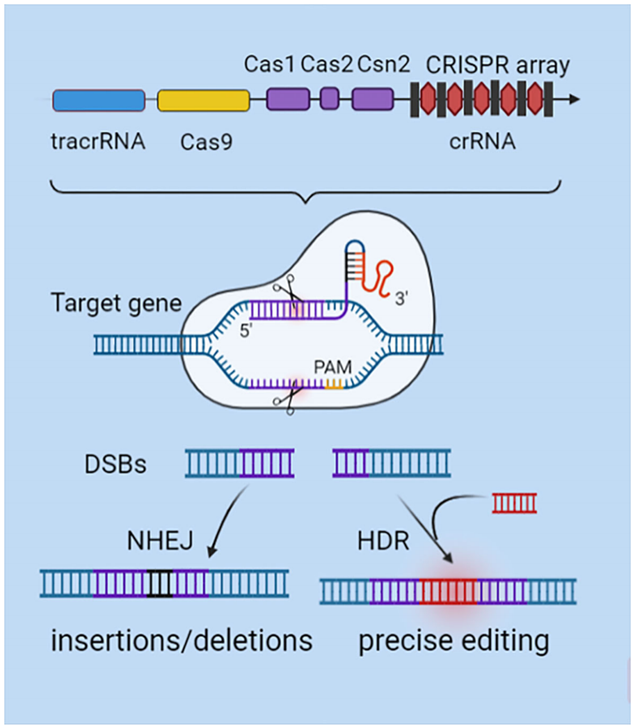Knock in cell line establishment
1、Knock in cell line introduction
Knockin cell line refers to the precise insertion of exogenous genes into specific genomic loci through homologous end recombination, and obtaining stable expression of exogenous genes through screening and validation processes. It utilizes specific tools and methods, such as the CRISPR/Cas9 donor system, to break DNA double strands at specific targets and precisely insert exogenous DNA into the targets. It has the characteristics of precise insertion and stable inheritance, and plays an important role in biological research such as gene function research, recombinant protein localization, drug screening and target validation, tumor treatment, etc. It is widely used in biomedical research, agricultural improvement, biotechnology and other fields, providing new possibilities for human disease treatment, crop variety improvement, and the development of the biotechnology industry.
2、Principle of knock in cell line construction
Add homologous fragments on both sides of the target DNA at both ends of the exogenous gene and construct them into a donor vector. Then, transfer the CRISPR/Cas system and donor vector together into the cell. The CRISPR/Cas system cleaves DNA double strands at specific targets, producing DNA double strand breaks (DSBs) that trigger the cell's DNA repair process. When repairing DSBs through HDR, donor vectors carrying exogenous genes can serve as templates for HDR for DNA repair, enabling precise insertion of exogenous genes into specific targets. Then, using the vector corresponding resistance to complete drug screening, monoclonal screening is performed (if a fluorescent reporter gene is knocked in, preliminary screening can also be performed by observing fluorescence), and positive monoclonal antibodies that successfully achieve target site fragment knock in are screened through target site amplification and sequencing verification.
CRISPR/Cas9 gene knock in mechanism (Yanxin X et al., 2022)
3、Knocking in Cell Line Applications
① In the field of gene function research, compared to overexpression cell lines, knock in cell lines have known insertion sites of exogenous genes in the genome, which can avoid the risk of random integration. The experimental results are more stable and reliable, and can be used for gene function and protein localization research.
② In the field of gene and cell therapy, CAR-T, CAR-NK, and IPSC knock in cell lines can ensure no integration risk, have higher safety and stability, and can be used in the field of gene and cell therapy.
4、Service Process

5、Service advantages
Rich project experience: experience in constructing multiple mammalian cell lines to ensure high success rates.
Stable production process: gRNA-Cas9 RNP system and donor vector are used to construct knock in cells, which have stable and efficient homologous recombination efficiency.
A comprehensive quality inspection process: combining PCR validation and sequencing validation to ensure accurate insertion of exogenous genes.







